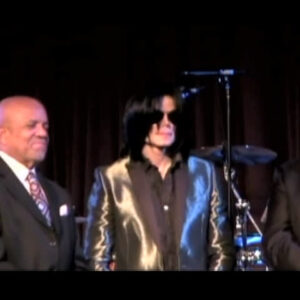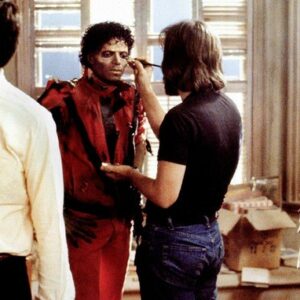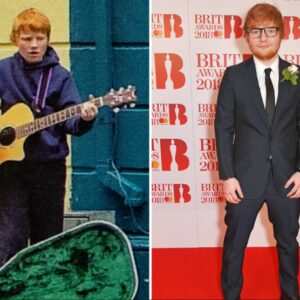Introduction: Setting the Scene
When Maggie Gyllenhaal’s film The Lost Daughter premiered, it wasn’t just another notable movie debuting on the festival circuit. It was an unmistakable statement, a piece of cinema with weight, and a fascinating moment in the landscape of Hollywood storytelling. Adapted from Elena Ferrante’s novel, The Lost Daughter delves into themes of motherhood, autonomy, and the unspoken complexities women often face. But while the film attracted attention for its ambitious narrative and Gyllenhaal’s directorial prowess, an equally captivating story unfolded behind the camera—a powerful, resilient friendship blossomed between Gyllenhaal, the film’s debuting director, and Dakota Johnson, its lead actress.
Working on a film with a raw, vulnerable premise, Maggie and Dakota were drawn together, bonding over their shared passion for storytelling, professional commitment, and the challenges faced by women in the film industry. As the film journeyed from script to screen, a remarkable bond was nurtured between them, one grounded in respect, shared values, and mutual admiration. This connection transcended their roles of actress and director, becoming a unique friendship that continues to stand as a testament to the power of female collaboration and support in Hollywood.
Shared Passion for Storytelling
Both Maggie and Dakota entered The Lost Daughter driven by a shared dedication to authentic storytelling. For Gyllenhaal, transitioning from actress to director was a move that demanded fearlessness and vulnerability—a leap that Dakota deeply respected. Dakota, in turn, wasn’t just another actress to Maggie; she was a collaborator willing to immerse herself fully in a role that explored the complex intersections of guilt, freedom, and self-discovery. This convergence of shared values created an atmosphere on set that was both artistically rich and deeply introspective.
Maggie’s directorial style provided Dakota with a creative playground—a rare freedom in an industry that often dictates strict boundaries and expectations. This collaboration allowed Dakota to dive deep into her character, Nina, revealing layers that went beyond what was scripted. Maggie’s ability to guide without confining encouraged Dakota to explore new depths, enhancing her portrayal and deepening their connection. In many ways, Maggie’s openness and Dakota’s willingness to explore her character’s vulnerabilities became a reflection of their mutual respect and shared passion for storytelling. They weren’t just making a film; they were telling a story that mattered to both of them in profound ways.
Professional Trust and Respect
One of the hallmarks of their friendship is the professional trust and respect that developed between Maggie and Dakota. Maggie’s approach as a director went beyond the practicalities of filmmaking; she created a safe, collaborative environment on set that allowed each actor to bring their unique perspective and emotional depth to the film. Dakota, known for her thoughtful yet fearless performances, found in Maggie a director who not only valued her input but encouraged her to push her boundaries.
Dakota’s willingness to be vulnerable in front of the camera wasn’t taken for granted by Maggie. Instead, Maggie recognized Dakota’s bravery and met it with her own brand of courage—a commitment to telling a story that resonated, even if it wasn’t always comfortable. This mutual trust became the bedrock of their working relationship and laid the foundation for a lasting friendship. They both knew that the work they were doing was challenging, but they found solace in each other, understanding the importance of pushing creative boundaries without compromising their individual values.
As The Lost Daughter unfolded, their trust translated into performances that felt authentic and powerful. Dakota, feeling both supported and challenged, was able to delve deeply into her role, bringing an emotional honesty to Nina that resonated with audiences. And Maggie, witnessing Dakota’s talent firsthand, found herself more in awe of her collaborator, recognizing the courage it took for Dakota to bring such rawness to the screen. This symbiotic relationship between director and actress, grounded in respect and shared risk-taking, resulted in a dynamic that went beyond the film—a genuine bond forged through shared artistry and trust.
Empathy and Understanding in Women-led Projects
While The Lost Daughter was an artistic project, it was also a space for two women in Hollywood to connect on a personal level, discussing the trials and triumphs unique to their experiences. Maggie, having faced the demands of Hollywood as an actress and now stepping into a directorial role, understood the pressures Dakota navigated as a young actress in a media landscape that often scrutinizes and objectifies. Dakota, likewise, found in Maggie a mentor and confidante, someone who understood the complexities of balancing creative ambition with industry expectations.
Through their time on set, they found themselves having conversations that went beyond the film. They shared their personal experiences, their struggles, and the moments that had shaped them as artists and as women. This empathetic connection grew stronger as they navigated the male-dominated world of filmmaking, carving out a space where they could be vulnerable, open, and authentic with each other.
In many ways, The Lost Daughter became a women-led project not just because of its female director and lead actress but because of the genuine empathy and understanding that drove the collaboration. Maggie’s ability to recognize Dakota’s challenges and Dakota’s respect for Maggie’s experiences as a woman in Hollywood created a support system that felt rare and significant. They weren’t just colleagues—they were allies, united by their experiences and their shared determination to create something meaningful.
Celebrating Each Other’s Success
Even after The Lost Daughter premiered, Maggie and Dakota continued to champion each other’s achievements, demonstrating a sincere admiration for one another. Dakota has spoken publicly about her admiration for Maggie’s debut as a director, commending her courage and vision in bringing such a complex story to life. Her praise wasn’t merely professional; it was personal, an acknowledgment of the courage it took for Maggie to step into a new role in an industry that doesn’t always embrace change.
On the other side, Maggie has been equally vocal about Dakota’s talent, highlighting the depth and commitment she brings to her roles. In interviews, Maggie often describes Dakota as a “fearless actress,” one willing to explore the darker, more complicated aspects of her characters. This public support has only strengthened their friendship, showcasing a bond built not just on admiration but on a shared respect for each other’s artistry.
This mutual celebration of each other’s success is refreshing in a field often marked by competition and rivalry. Maggie and Dakota have proven that there’s space for women in Hollywood to uplift each other, to celebrate each other’s strengths, and to create an environment where friendship and professionalism are not mutually exclusive. Their admiration for one another’s talents is genuine, and it has only deepened their friendship, which has grown well beyond the confines of the film set.
Friendship Beyond the Film Set
As time has passed since The Lost Daughter’s release, Maggie and Dakota’s friendship has only grown stronger. They have continued to support each other in both personal and professional spheres, embodying a lasting, authentic bond. Their friendship extends beyond the film set; it’s a connection grounded in mutual respect and shared values that will likely endure regardless of whether they work together again.
In a world where professional relationships often fade once a project is complete, Maggie and Dakota’s friendship is a testament to the power of genuine connection. They have built a friendship that goes beyond the roles they played in each other’s lives during the making of The Lost Daughter. They continue to be sources of support, understanding, and encouragement for one another, reflecting a unique bond that is as rare as it is inspiring.
Conclusion: The Impact of Female Friendships in Film
The friendship between Maggie Gyllenhaal and Dakota Johnson is more than a byproduct of The Lost Daughter—it’s a testament to the power of female collaboration, empathy, and support in an industry that often pits individuals against one another. Their journey exemplifies the strength that comes from women supporting women, both in their careers and in their personal lives. Through their collaboration, they’ve shown that female friendships in Hollywood can be transformative, offering a safe space to navigate an industry often defined by its challenges.
In a broader sense, Maggie and Dakota’s story highlights the importance of female representation and leadership in storytelling. Their journey together is an inspiration, not just for women in film but for anyone who values friendship, empathy, and the courage to support others in their pursuit of creative expression. Their collaboration has made an indelible mark on Hollywood, reminding us all of the impact of genuine connection and the boundless potential that arises when women uplift one another.





